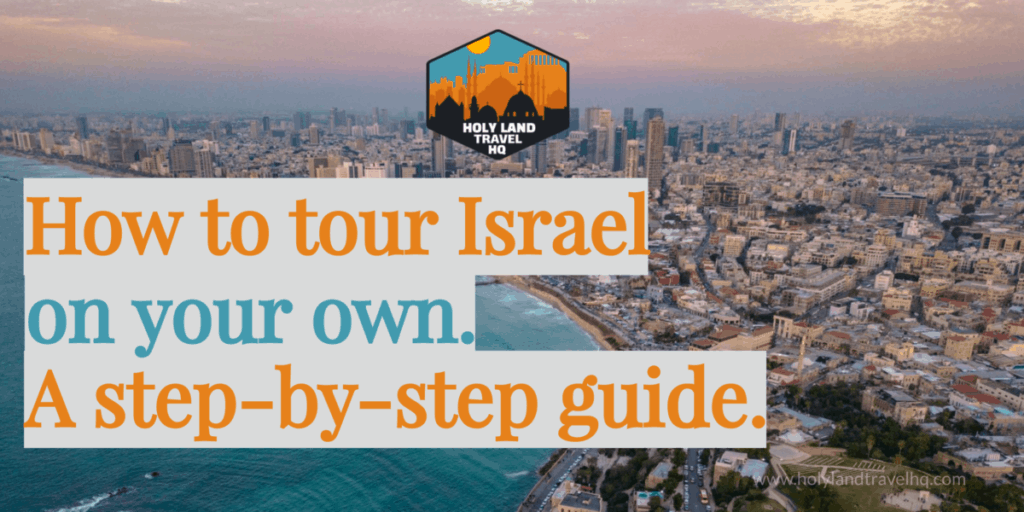
If you are looking to tour Israel on your own, then you are in the right place. Whether its just wanting to go alone or a group tour timeline doesn’t fit your schedule. Or you’re in Israel on a business trip. Touring on your own doesn’t have to be difficult.
In a previous post I talked about visiting Jerusalem on your own. Traveling the whole country is going to be a little different. Everything you want to see in Jerusalem is packed into a small area. Everything outside Jerusalem is not.
Below is a how-to guide to traveling Israel on your own. At the bottom is an itinerary with maps. Here are the topics we are going to cover.
- Can you travel Israel on your own?
- When is the best time to go to Israel?
- Getting to Israel.
- Getting around Israel.
- Lodging in Israel
- Hotels in Israel
- Hostels in Israel
- Air BnB in Israel
- Are tour guides available in Israel?
- How much do private tours cost?
- How much do biblical sites in Israel cost?
- Is Israel cheap to visit?
- Can you swim in the Dead Sea?
- What should I buy in Israel?
- What should I pack for a trip to Israel?
- 2-week Holy Site Itinerary.
All links are direct.
All currency is in US Dollars, unless otherwise specified.
Can you travel Israel on your own?
Absolutely. People travel to Israel all the time on their own. But a lot of those people aren’t doing an intentional tour of biblical sites. If you want to do your own Holy Land tour through Israel, you can more than easily accomplish it though.
Jerusalem, can be done in 2 or 3 days. The rest of the country can take anywhere from 7 to 12 days. Tour groups normally split the country into areas. Eleven to be specific: 1) the coast; 2) Nazareth; 3) Galilee; 4) Golan; 5) Samaria; 6) Jerusalem; 7) the Shephelah; 8) Bethlehem; 9) Jericho; 10) the Dead Sea; and if you want the full tour 11) the Negev.
On a typical Holy Land tour of Israel, you would get on a bus and let the tour leader and staff plan everything out. Park passes, transportation, lodging, and even a few meals will be part of the trip cost. The group leader and/or tour guide will provide the itinerary and what-to-know about each site.
Because the industry of Holy Land tourism is such a big thing in Israel, hotels and transportation is rather abundant. There are a plethora of hotels, kibbutz (travel lodges), hostels, and Air BnB offerings. Which means that you have plenty of options. The down side is that, depending on the season, you may be competing with group reservations.
Although a rental car is going to be the most convenient for this kind of tour, there are other options. Israel has public transportation and there is even a biking path if that’s your thing.
You could even do a mixture of it all.

When is the best time to go to Israel?
The best time to visit Israel is in April/May and October/November. There are a couple variables that go into this. For a full discussion on timing, check out my post on the topic right here.
Airfare fluctuates during the year due to global travel seasons. The highest airfare tends to be in the summer months, (June, July, and August) and December. This makes sense because the summer is typically when people travel due to the US school calendar.
December has started to become a bigger travel month over the years because of Christmas.
The weather is also a factor. The summer have zero precipitation. And the average temperature countrywide is 84 deg F with highs surging into the 90s and 100s F.
The winter months have high precipitation. With lows being in the 40s and 50s F. This makes the spring and late fall optimal for the weather.
Crowds are another problem. Unfortunately, there is no data on crowds, but there is data on tourist arrivals. Israel’s peak arrival month is October. This is due to the Jewish Holiday Yom Kippur. The spring is the next high. The summer months are a lull between spring and October. January is the slowest month.
One thing to note here. Travel is highest in October because of Yom Kippur. But this doesn’t mean tourist sites are going to be packed. And low travel in the summer doesn’t mean that sites won’t be packed.
Because of the nature of Israel, Jewish families are spread across Israel, Europe, and the United States. So, there is a lot of travel to and from Israel to visit family. And not to tour. Arrival numbers do not differentiate this.
At the end of the day, you can’t go wrong visiting in the spring or fall.
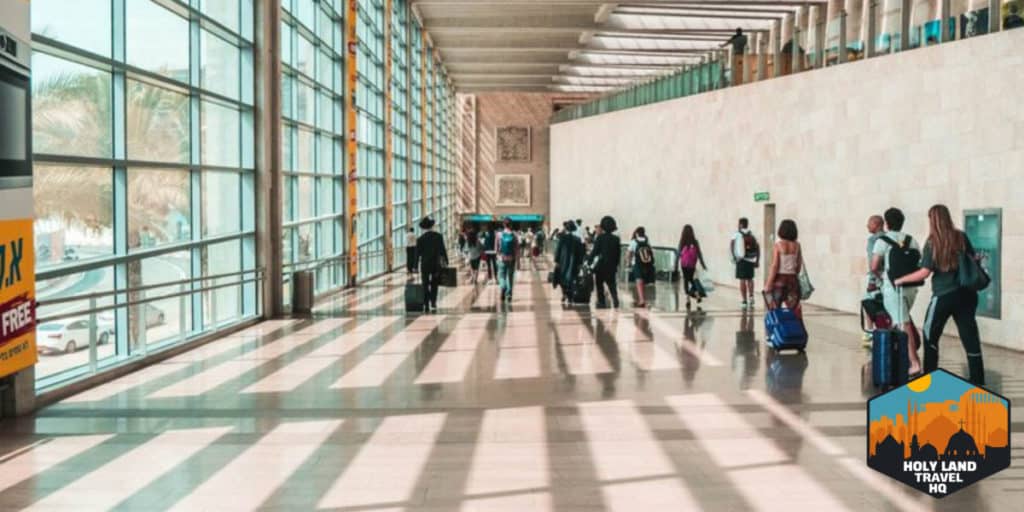
Getting to Israel.
As noted above, airfare fluctuates. Prices are highest in June at the beginning of the summer tourist season. Prices are lowest from October through March. Average Airfare in 2020 before COVID was between $650 in the low months and $1,300 in the high months. With spikes up around $3,400.
International air travel has 1 major port of entry, Ben Gurion airport in Tel Aviv. Tel Aviv sits on the Mediterranean Coast and is pretty central in terms of not being too far north or south. It’s roughly an hour or so drive from Jerusalem.
There are a couple other “international” airports around the country. But they are small, mostly used for regional international traffic and don’t support the major airlines.
Your best bet is to fly though Tel Aviv. Its central, and all your follow-on transportation services are well established there. Like rental cars, airport shuttles, buses, city transportation, and more.
Can you enter Israel by boat? Yes, the main passenger port is Haifa. In the south on the Red Sea is the Port of Eilat. Both offer 24/7 customs services. Along the western Mediterranean Coast there are several marina’s which offer customs services on call.
Are there any border crossings on land? Yes, there are crossing points with Jordan and Egypt. In Eilat, use the Rabin crossing point to go to and from Jordan. And the Taba crossing point for Egypt. On the eastern border with Jordan, the Sheikh Hussein crossing point is the primary one for foreigners and Israeli citizens. The Allenby Bridge is primarily for the Palestinian population going to and from Jordan, but foreigners can use it too.
For an exhaustive list of border crossings and customs checkpoints, check out what the Israeli Ministry of Foreign Affairs has to say right here.

Getting around Israel.
If you follow the itinerary below then the most convenient option is to rent a car. Most of the major rental companies are in Israel. Avis. Budget. Hertz. But there are also some competitive options native to Israel and the region. The problem with renting is the usual suspects: cost, gas, and parking. Check your favorite travel booking site for prices as they fluctuate like any other location.
The average cost of fuel in Israel over the last 2 years has fluctuated between $6 and $6.81 per gallon. In New Israeli Shekels (NIS) per liter that comes out to 5.38NIS and 6.05NIS per liter.
Something to note about fuel grades. In most countries outside the US, the fuel grade is higher, usually in the 90s (93, 95, or 97). Whereas, in the US its in the 80s (87, 89, 93). This means the fuel has been refined more and therefore more expensive.
The next option is public transportation. All the major cities have some sort of public bus or tram system. There are a few options for traveling between cities on public transportation though. Egged buses facilitate travel throughout the country and Dan Buses travel in and around the Tel Aviv area.
Bus fares vary based on the city and distance. For example, an Egged bus from Tel Aviv to Jerusalem is around $5. A bus from Tel Aviv to Nazareth is around $20.
Although taxis are an option here, you’re going to spend a lot of money.
Uber is present, but only cabs are allowed to provide the service. Ridesharing in general is very limited. Scooter-sharing services, Bird (US), Lime (US), and Wind (German) are available in both Tel Aviv and Jerusalem.
Other options include biking and hiking, which will not be covered here.
The big thing to keep in mind is that many of the churches that were built to commemorate something in the Bible are in towns. So, public transportation and walking is doable. But archaeological and historical sites, such as Dan and Caesarea Philippi, are often well outside the public transportation routes.
To really see the Holy Land on your own, a rental car is your best option.
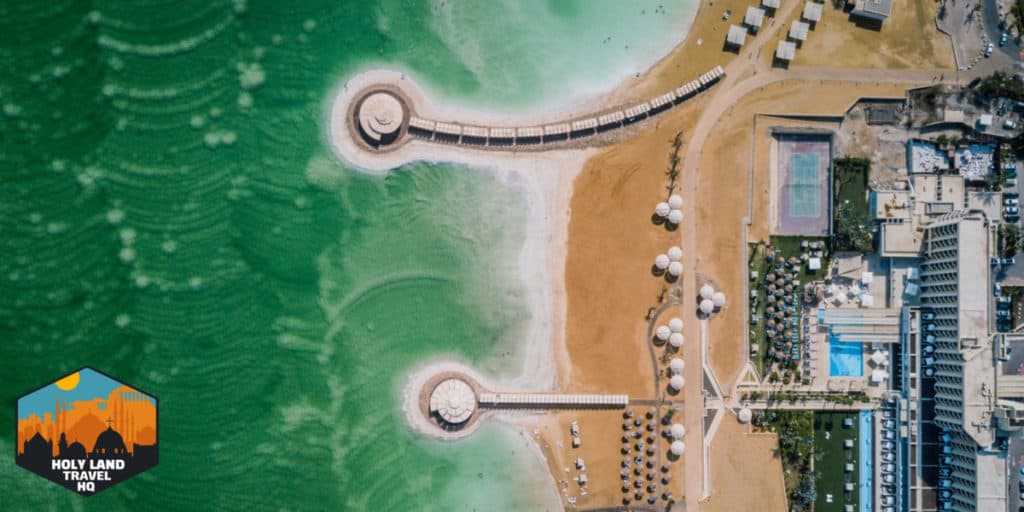
Lodging in Israel
When it comes to lodging, there are several options. Hotels, hostels, kibbutz (travel lodges), and Air BnB to name the major ones. The driving factor here will be whether you prefer ‘crawling’ or ‘basing.’ What I mean by ‘crawling’ is that you stay at a different place each night while you go. And ‘basing’ means you get a room in an area to stay for several days and go out from there each day.
The way I’ve set up the itinerary below, both crawling and basing are utilized.
Because of the nature of Israel’s tourist industry, many hotels, hostels, and lodges provide meals. And some of those layouts are extensive. But not all locations do this, so make sure to verify when you book your stay.
Hotels in Israel
Hotels in Israel aren’t all that different than the United States when it comes to cost. In general, they run from about $100 all the way up to $1,000 per night for a room. Prices fluctuate with the seasons. But you can expect places charging around $100 for the 2- or 3-star level. And the upper $100 and $200 range for the 4- and 5-star level.
Luxury hotels, like the King David Hotel and the David Citadel Hotel in Jerusalem are upwards to $1,000 per night. They come with all the bells and whistles.
When you travel with a tour group, lodging costs are included in your group travel. That’s the benefit of doing a group tour. Another benefit is that most group tours will choose decent hotels. You won’t be staying in low-end places unless there is no other choice. Usually a poor hotel choice is a result of traveling in a saturated tourist season.
What is a kibbutz? Technically a kibbutz is a collectivist commune that shares the burden of tending crops. Kibbutz literally means ‘gather.’ They started in the early 20th century in Galilee.
There are lodging locations around Israel that call themselves kibbutz, but really they are kind of like a resort. They have large dining rooms and offer buffets as part of the stay. They may or may not be associated with an actual kibbutz. If they are it’s part of their economy. The quality ranges.
Hostels in Israel
Hostels are another option. They charge by person. What you can expect with a hostel is a bed, a social atmosphere, and meals.
If you’ve never stayed in a hostel before, they are basically bunk houses. Rooms can have anywhere from 4 to 10 beds, or more. Community lounges allow you to relax or socialize. Bathrooms are common spaces as well.
The price range for a bed at a hostel is between $20 and $80. With the higher end offering more amenities or possibly a private room. No private bathroom though.
Hostels are generally geared towards young solo travelers who want to meet new people. However, all ages are welcome, and so are groups.
Amenities can vary widely as well. For example, Capsuleinn in Jerusalem has enclosed bunks with lights, electrical outlets, TV screens, and air vents. Other hostels are merely bunk rooms.
Some hostels have kitchens so you can cook your own food. And some offer nightlife and social activities.
To book, check prices, and find availability of hostels check out these websites or go to booking.com.
Air BnB in Israel
Air BnB is the third option. If you aren’t familiar with the latest craze in lodging, Air BnB is an online hospitality marketplace. For the most part, listings are often for full houses, apartments, or condos. But sometimes people will list rooms or granny flats.
All listings are facilitated by Air BnB but listed by the property owner.
For owners listing their properties, Air BnB is essentially a small business. As a result, customer service and amenities vary greatly!
Air BnB is basically like having your own apartment in the city for a couple of days. And you won’t get bothered by maid service.
Although, Air BnB is huge in the US, Israel has a rather large inventory of listings.
For the most part, scams on Air BnB hit the property owners, but there are some issues to be aware of.
1. Never pay for an Air BnB stay in cash or off the website. [Article]
2. Be cautious if your host wants to transfer you to another listing. [Article]
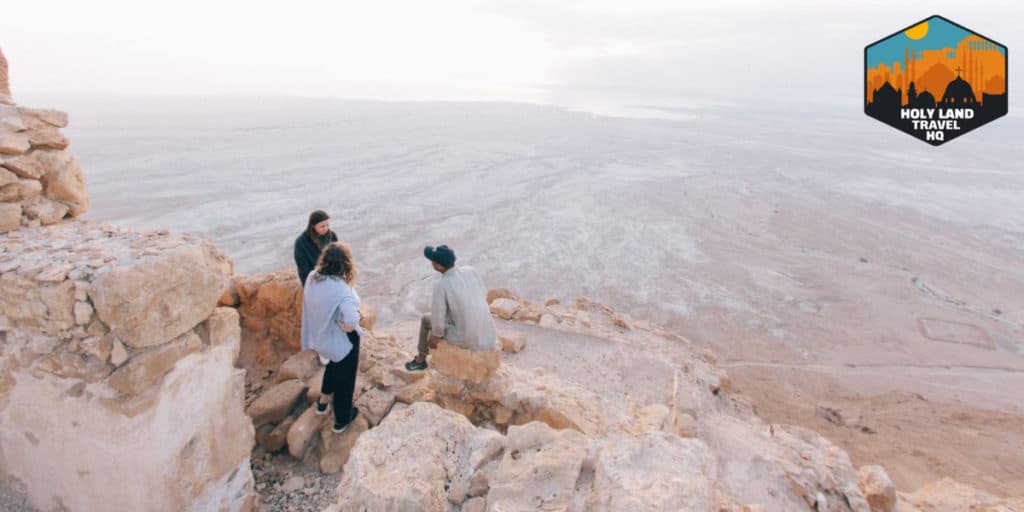
Are tour guides available in Israel?
Yes, there are tour companies in Israel that offer day trips as well as multi-day trips. The most well-known are Abraham Tours and Sandemans New Europe Tours.
Abraham Tours has hubs in Tel Aviv, Jerusalem, Nazareth, and Eilat. The company is run by the Abraham Hostel company. Most of their tours leave from their hostels. This is a good thing; you won’t be riding around town picking people up at other hotels. You meet up, start the tour and finish.
Single day trips with Abraham Tours range from around $40 to $100. That is mostly dependent on the distance to the destination.
Sandemans offers a free tour of Jerusalem that last about 2 hours. It’s advertised as free because its tip based. It’s used to train new guides and give them experience. Sandemans offers a few other day-tours in Jerusalem and also in Tel Aviv. Average cost is around $25. They are walking tours, which means they leave from a specific starting point. So, no time wasted picking up other tourists.
When looking for a tour company, watch out for tours that pick you up at your hotel. There is nothing nefarious about it, but time is wasted. Sometimes upwards to 2 hours each way. These companies tend to charge a little more as well for the door to door service.
The other issue that you may encounter with any of these companies is frequent shopping stops. Some tourists like to shop their way through a destination. Also, tour guides sometimes get kickbacks for stopping.
With the day tours mentioned above, shopping is going to be rather limited.
One last thing to note, these are not theologically based tours. You will get religious history, but you aren’t going to get Christian theology.
How much do private tours cost?
Maybe the day tour isn’t your thing. Or, you are fine setting up your lodging, but you want to combine your touring and your transportation. A private tour is a good option.
Private, or luxury, tour guides in Israel cost around $200-$300 a day. But this isn’t necessarily per person. And it isn’t expensive by any means. With more people in the group, the per-person cost goes down.
If your timing doesn’t fit with a group tour from your church or community, this might be the route for you.
The plus side with this option is that you can plan out your trip with the tour company.
Private tours vary in terms of theology. If you go with a church group from home, you’re going to get lead by a seminary trained leader. With a private tour, most likely you are going to get a professionally trained tour guide. They may or may not be adequately prepared with theological learning points.
I believe that any Holy Land tour should also be theologically based in order for a traveler to get the most out of their time. However, if you have a small window of opportunity, then a private tour might be the answer.
Both Abraham and Sandemans offer private tours. Shin Luxury Tours is another option. They only do private tours and are staffed with more experienced guides.
How much do biblical sites in Israel cost?
An unlimited Park Pass from the Israeli Nature and Parks Authority is about $45. You can access around 70 sites with it. All of the archaeological sites will be on the pass. Churches, lookouts and most everything in Jerusalem are not. But they’re free anyway.
The pass is good for 2 weeks starting on the day of its initial use.
In Jerusalem, the pass is only good for the City of David Archaeological site.
Other locations in Jerusalem that require an entrance fee are:
The Western Wall Tunnel Tour – Adults $11. Seniors, disabled, and children are $6.
The Church of the Redeemer Tower – Everyone $5.
The Israel Museum – Adults $16. Students and Seniors $12. Other discounts $8.
The Yad Vashem Holocaust Museum – Entrance to the museum and grounds is free. A guided tour for 2 people will run you around $150. An audio tour is $18 a headset.
The Western Wall, Temple Mount, Church of the Holy Sepulchre, Old City Wall walk, and other sites in Jerusalem are free of charge.
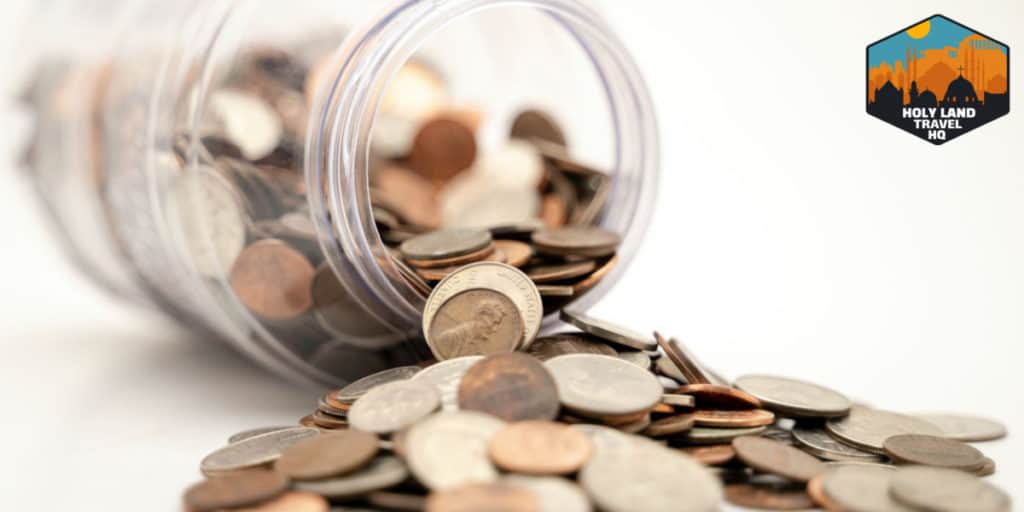
Is Israel cheap to visit?
The cost of travel in Israel is on par with the cost of travel in the United States. This is true when it comes to hotels, food and souvenirs. The only exception is gas, as noted above.
Travel costs stack up due to eating out, hotels, transportation, and site-seeing. However, visiting Israel is not like visiting Disneyland. Overall, visiting Israel can be done on any budget.
If a hotel offers food with your stay, then you’ve already saved money.
In my post about the cost of a Holy Land tour, I stated that a standard tour averages at around $300 per day per traveler. This is a great number to work with. If you are traveling on your own with a spouse or friend you can easily bring this number down with your transportation and lodging choices.
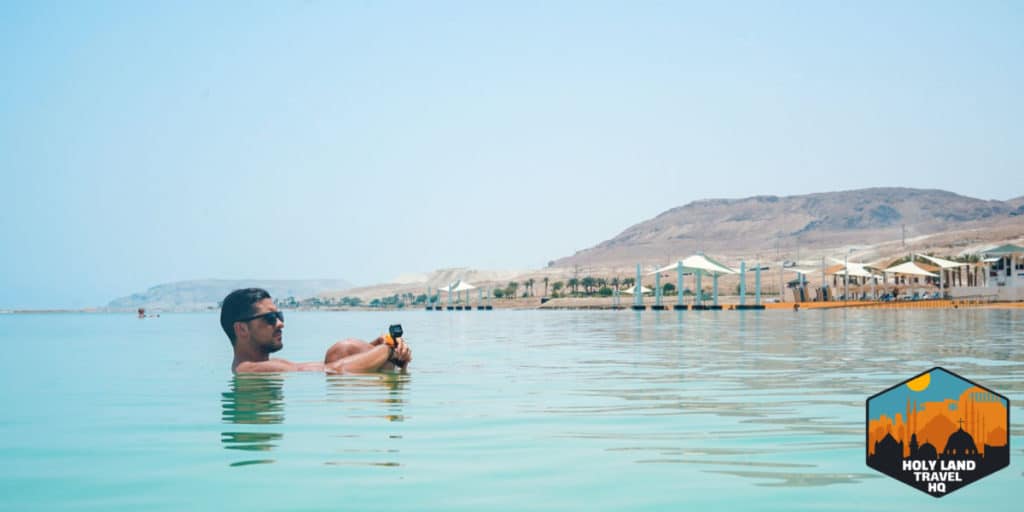
Can you swim in the Dead Sea?
Yes, you most certainly can swim in the Dead Sea. There are 7 beaches where you can wade into the water. Or you can just plunge in.
The salt content of the Dead Sea is 9 times higher than the ocean. This means 2 things.
1. You will float high. It will actually be difficult to go underwater. The reason for this is that the salt content makes the density higher. If you’re a nerd like me that means the water has more weight (technically it’s mass but weight is more understandable), per volume than ocean water. When you get in any liquid, the weight of the volume displaced is equal to your weight. So, when you get in the Dead Sea less volume needs to be displaced.
2. The higher salt content will start to sting after about 6 or 7 minutes. So, don’t stay in too long. And don’t open your eyes underwater. Get in, do your mud thing, get out, and take a shower. Take a break and get back in if you want.
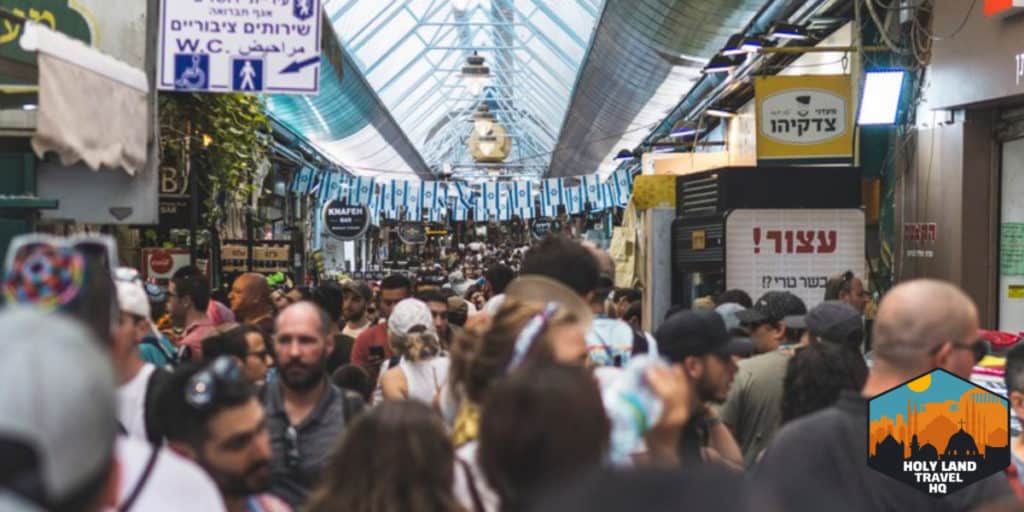
What should I buy in Israel?
For a great discussion on souvenirs to buy in Israel check out my post on the topic right here.
Here is the list of things I cover in that post.
- Ahava mineral lotion from the Dead Sea.
- Widow’s Mite
- Olive wood carvings
- Historical photographs – Elia Photo Service
- Charm jewelry from Magdala
- A Kippah from the Western Wall (FREE)
- Post Card
- Your pictures (FREE)
For a discussion on buying antiquities, check out my post on the topic right here.
And guidance for bringing back sand is here. Spoiler alert, I don’t recommend it.
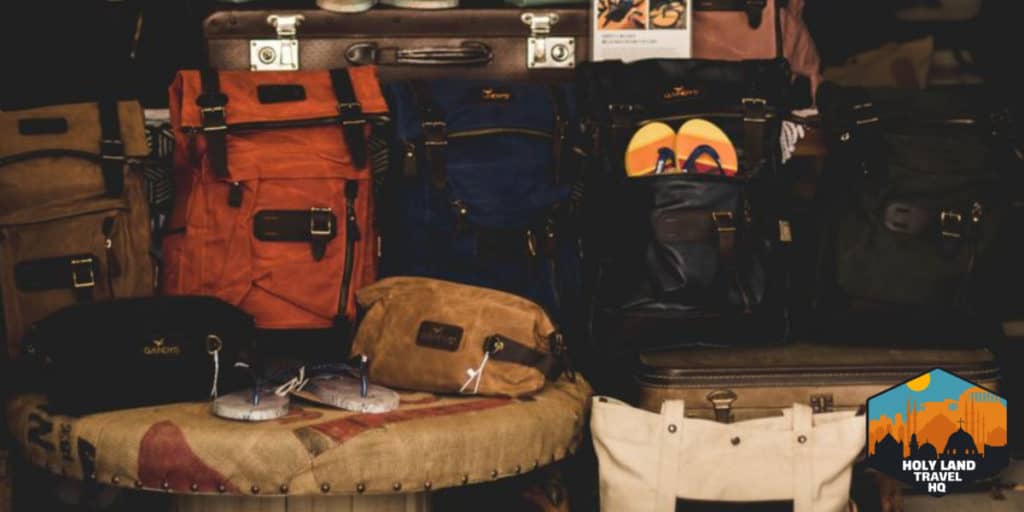
What should I pack for a trip to Israel?
For a discussion on how to prepare for your Holy Land tour, check out my post on the topic here.
In it, I cover the following topics:
- The paperwork
- Preparing for your flight.
- What to pack.
- Non-clothing gear.
- Determining your gadget requirements.
- Stay connected.
- Hydration.
- A picture plan.
- Make a commitment to have fun.
- Jewish Holidays.
- A money plan.
- A souvenir plan.
Also, check these other posts to get clothing recommendations.
Types of shoes that work best.
Best styles of hats to protect your head.
And, a discussion on pockets. This post is geared towards security and preventing pickpockets from taking advantage of you.
If you want to use your own phone, or rent one, check out this post on the topic right here.
And lastly, for information on power needs, such as adapters and converters check out this post.
2-week Holy Site Itinerary.
There are 11 areas that we’ll hit. This list is predicated on the assumption that you will be landing in Tel Aviv.
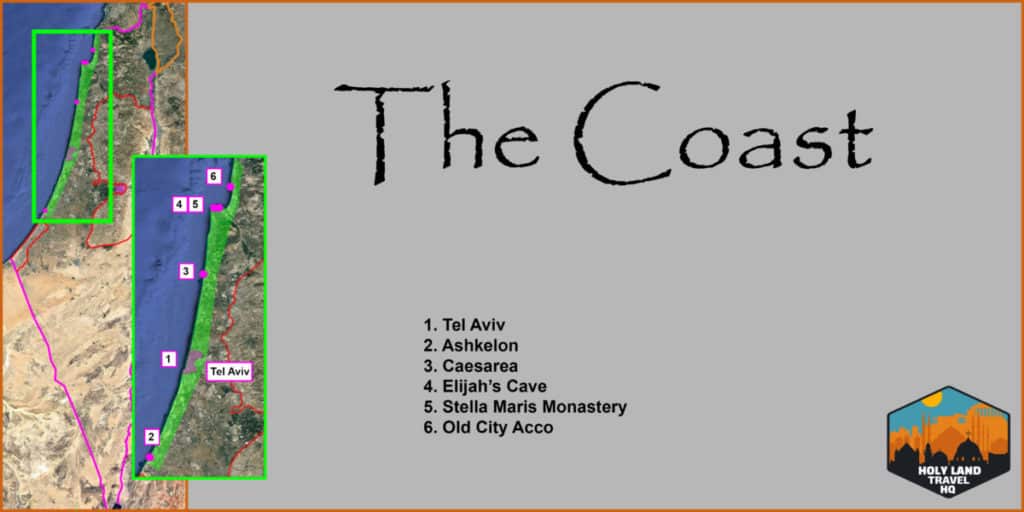
1. Coast (1 night)– After a night or two in Tel Aviv, we’ll head south to Ashkelon (30-40 miles). Then head back north, stopping in Caesarea (60 miles) and then Haifa-Acre area (20 miles). Stay the night.
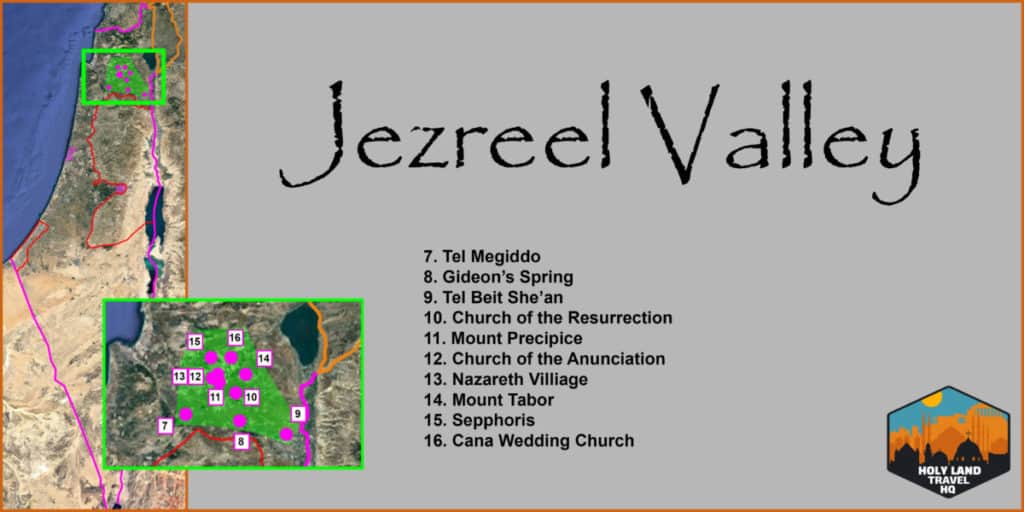
2. Jezreel Valley (Nazareth) (1 night)– We’ll get up early and head to the Jezreel Valley (20 miles). It’s up to you to choose where to go first. If you want to hit Megiddo, Nain and Mount Tabor you can (optional). Or you can go directly to Nazareth and start. But don’t forget the Wedding Church in Cana and the ruins of Sepphoris in Zippori (both within 5 miles of Nazareth). Sepphoris is where scholars believed Joseph took Jesus to teach him the craft of carpentry. Stay the night in Nazareth or head to Tiberias.
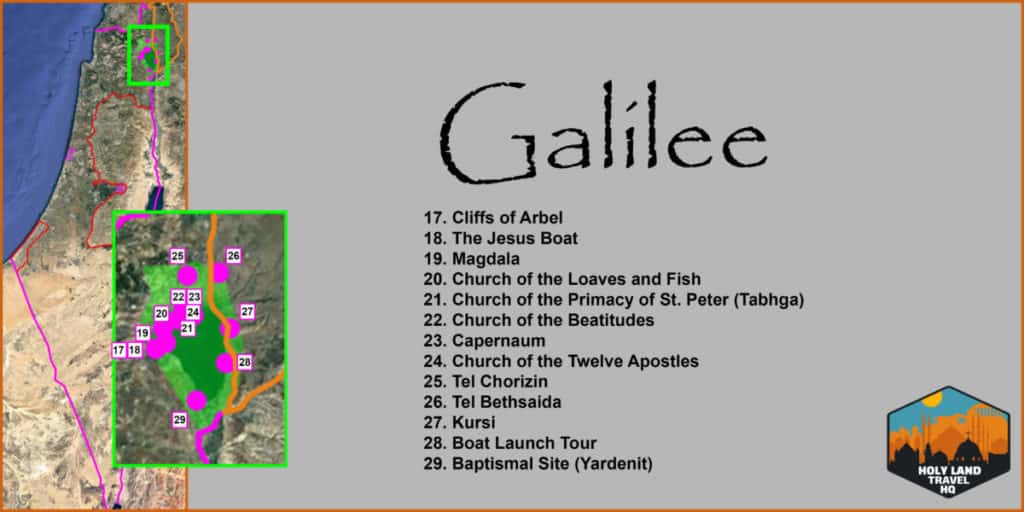
3. Galilee (3 nights)– Head to The Sea of Galilee (15 miles). We’re going to stay here for a few days. There are a ton of sites to visit, such as Capernaum, Magdala, and the Mount of Beatitudes. Don’t forget to get a boat ride on the sea. The Galilee and Golan areas are best done over 3 days, but you can take whatever time you want. Stay a few nights in Tiberias.

4. Golan (part of Galilee stay) (90-100 mile day) – Take a day trip away from Galilee to go north. At first glance it might appear to be boring. But the archaeological sites at Dan and Chorazim are large and provide a window into life in the Old Testament. At Dan, parts of the alter were found and scholars created a mockup 1:1 scale altar. It’s huge. Head back to Tiberias for the night.
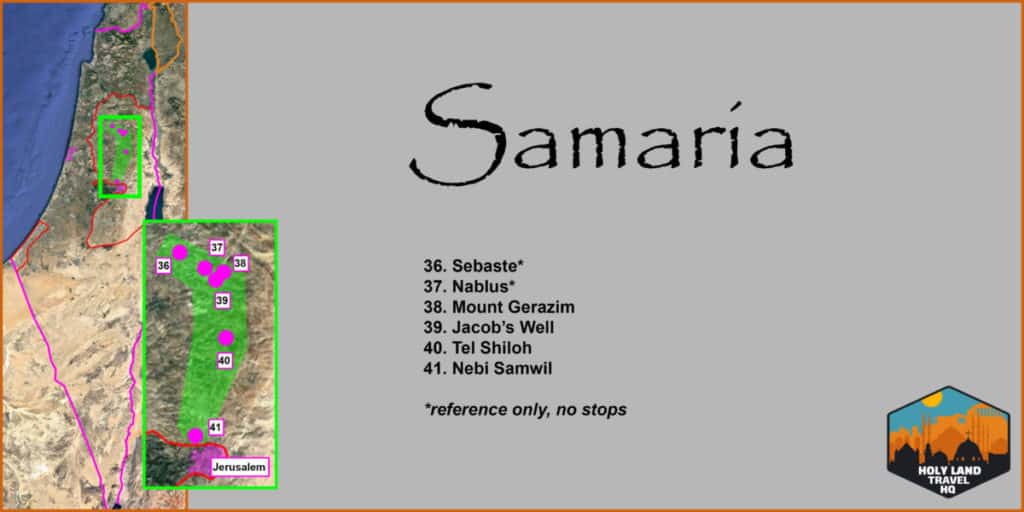
5. Samaria (1 Day)– on your way to Jerusalem you will travel through the West Bank and Samaria (100 mile day). Notable sites include Jacob’s Well, Mount Gerazim (this has a fascinating history), and Shiloh (the religious capital of the ancient Israelites). There Sebaste and Nablus are noted for reference, I recommend driving through due to safety concerns.
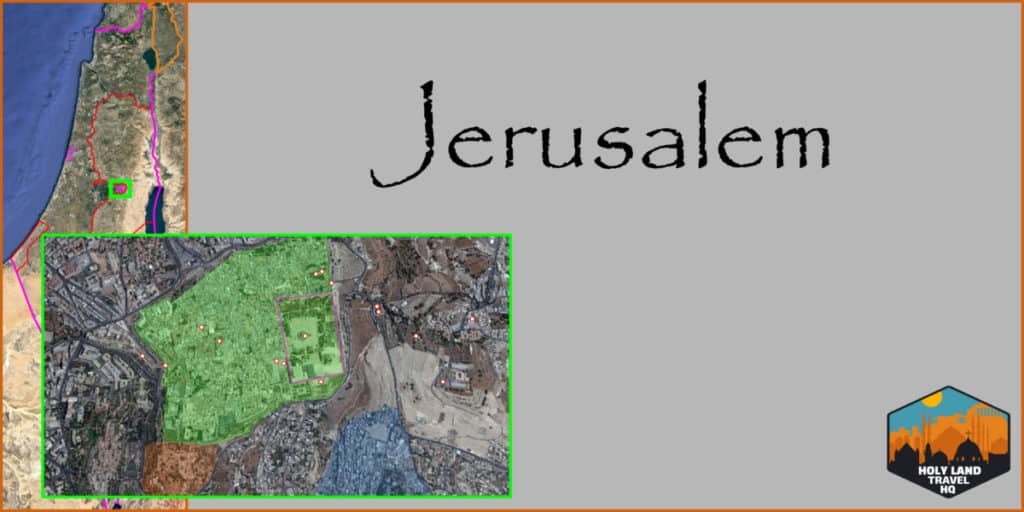
6. Jerusalem (4-5 nights) – For an exhaustive itinerary of Jerusalem check out my post on how to tour Jerusalem on your own. The ancient city can be done in as many days as you like, I suggest 3 days. We’ll stay here for a bit longer than that though, since we have some other sites to see in the area.
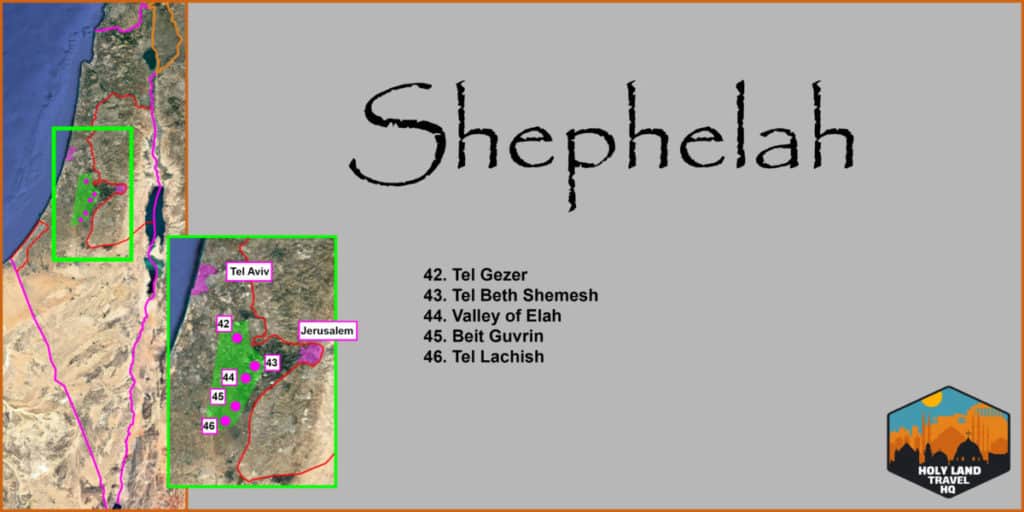
8. Shephelah (1 Day) (40-50 mile day)– The Shephelah is the region between the coastal plain on the Mediterranean coast and the Judean hills. Here you will find the archaeological sites at Gezer, Beth Shemesh, and Lachish. On your drive you can make a stop to overlook the Valley of Elah, where David defeated Goliath. Head back to Jerusalem.
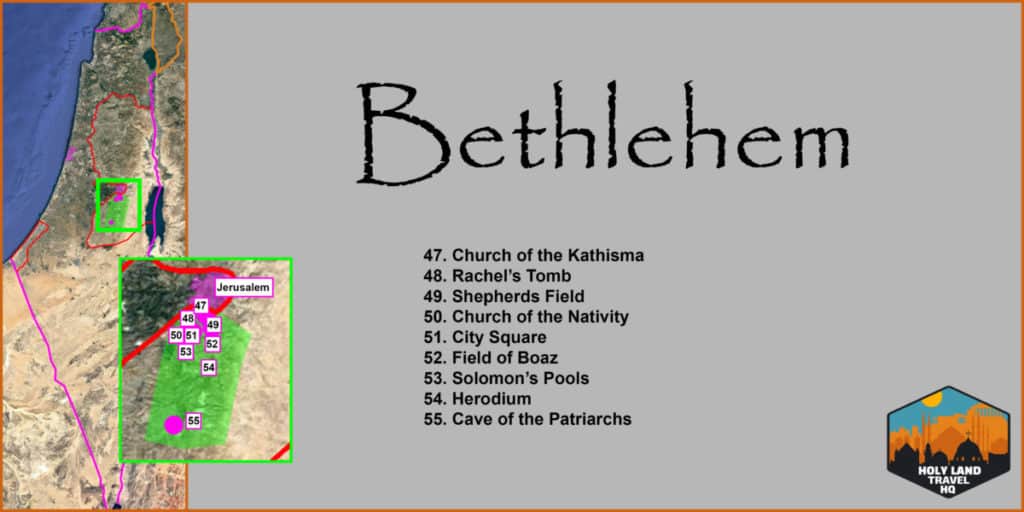
9. Bethlehem (1 Day) (20-30 mile day) – In Palestinian controlled territory, Bethlehem is full of interesting things. The Church of the Nativity is the traditional site of the birth of Christ. Its gaudy accoutrement is shocking. The Shepherds Field Chapel is more soothing and less stressful. Hit the Fields of Boaz on the way out of town and head south to the Herodium. This is a fortress Herod had built for him inside of a hill. Head back to Jerusalem.

7. Jericho (1 Day) (40-50 mile day)– Take an excursion out to Jericho for the day. On the way stop at the Inn of the Good Samaritan, Dani Lookout (great view of the Judean Wilderness), The Monastery of St. George and the archaeological site at Jericho. Head back to Jerusalem.
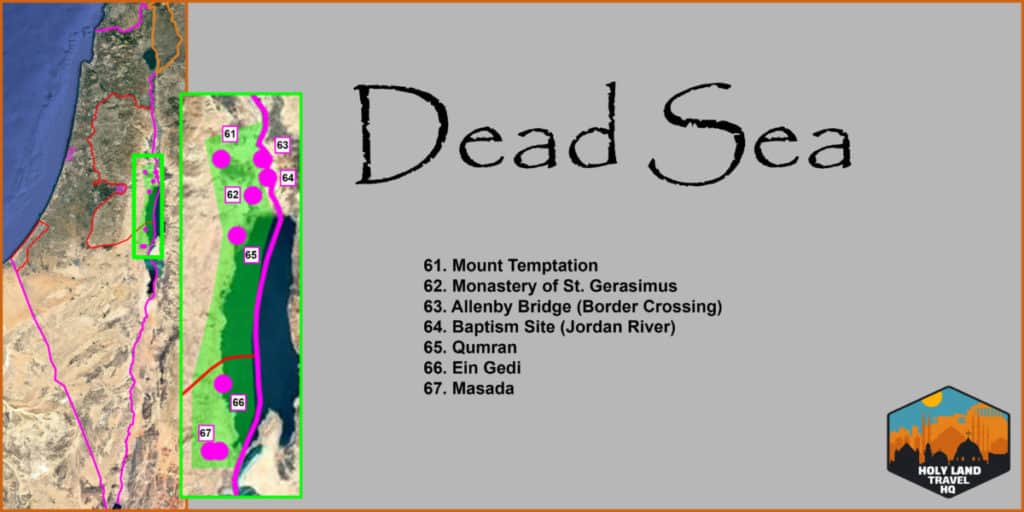
10. Dead Sea (1 Day) (90-100 mile day) – Leave Jerusalem behind and head east to the Dead Sea. First stop is the Baptism site on the Jordan River. Then head down to Qumran. There are 7 beaches on the Dead Sea. Kalia Beach, Neve Midbar Beach, and Biankini Siesta Beach are the farthest north. Mineral Beach is on the way to Ein Gedi where you’ll find a trail hike and the Ein Gedi Beach. Ein Gedi is where David hid out from Saul. Continue south and stop at Masada. Further to the south are the Ein Bokek Beach, the Segregated Beach and the Zohar Beach. Cut to the west and arrive in Arad where you’ll stay the night.
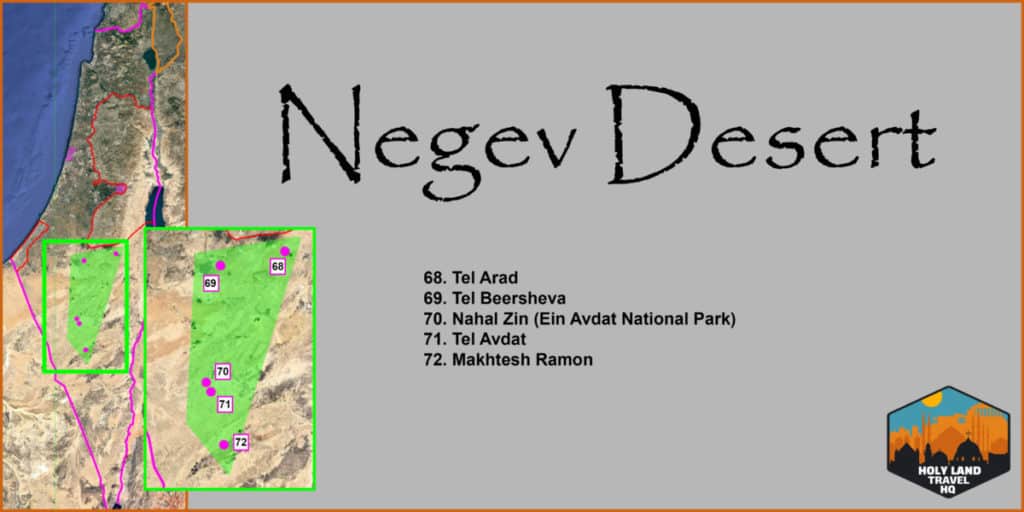
11. The Negev (Southern Desert) (1 Day) (160-180 mile day) – The Negev is the most overlooked part of Israel. It’s hot and seemingly devoid of sites. But the archaeological site at Arad gives us insight into how the Nabateans lived. The Nabateans are known for Petra in Jordan. Head west to Be’ersheva and then south to Avdat and Makhtesh Ramon. This is pretty far south, but is a must-see. It’s called the Super Bowl and it’s comparable to the Grand Canyon. It’s 25 miles long and 5 miles wide. Head to Tel Aviv
This turns out to be about a 14 to 15-day trek. You can shorten or lengthen it however you see fit. In the coming weeks I’ll be posting info on each site so you can find out more information. Or if you are traveling on your own you can tailor your journey.


